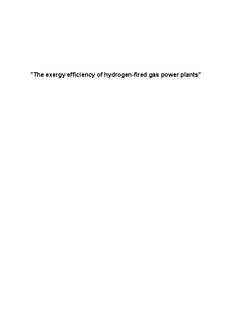| dc.description.abstract | The work includes an exergy analysis of the steam reforming process for conversion of natural gas to hydrogen rich gas for use in hydrogen-fired gas power plant. Based on the analysis two sustainability indicators were calculated, the exergetic efficiency and the renewability fraction. The same analysis has been performed for a system using auto thermal reformer (Zvolinschi, Kjelstrup, Bolland and van der Kooi 2002) instead of steam reformer, and the results were compared in order to find the better system of the two based on the indicators. The system using an auto thermal reformer had the best exergetic efficiency, and the renewability fraction was 0 for both systems. One should be aware of insecurities in the results, mainly related to assumptions and limitations with respect to the simulation process.
The two indicators were proposed by Zvolinschi et. al, as a contribution to the introduction of exergy analysis as a tool for industrial ecology. It was concluded that this will be a useful contribution, especially when using system boundaries that include the closure of material cycles. Then one can also calculate the third indicator proposed by Zvolinschi et al., namely the environmental efficiency. | nb_NO |
